
Hey, today I have a question. Question: Netflix, Google, YouTube, Instagram, Spotify, & Uber- What do all of these top applications have in common? Any idea? Yes, PYTHON!
Most of the top applications use Python programming language in a majority of their tasks. For Data Science, Full Stack Web Development, Cyber Security, Automation Testing, UI/UX Development, or any field that you choose today, Python is a language that you can not skip.
Python programming language is easy, versatile, and has multifold use cases and not one but many top reasons to choose. So, I have a basket of questions sorted out, related to Python interviews and jobs. Then, what say, shall we get started with the top Python Interview Questions?
Well, before you go for any Python job Interview, you should have a thorough background in Python. Check these Python questions that you may not directly be hit with but you should definitely know them.
Table of contents
- Python Questions you should know before you go for an Interview
- What is Python?
- What are the uses of Python?
- What are the top reasons to Learn Python in 2023?
- What is the scope of Python?
- Why is Python super popular? What are the best features of Python?
- Some tips to start learning Python?
- A few Python Interview Questions
- Want to learn more about the LEGB rule: Read here- The LEGB Rule Explaining Scope in Python Programming Language
- sorted() function in Python
- More on Python Interview Questions:
Python Questions you should know before you go for an Interview
1. What is Python?
Python is an interpreted, object-oriented, high-level, general-purpose programming language with dynamic semantics. The implementation of Python was started in December 1989 by Guido Van Rossum at CWI in the Netherlands.
In February 1991, he published the code to alt. sources. Furthermore, in 1994, Python 1.0 was released with new features like lambda, map, filter, and reduce.
2. What are the uses of Python?
Above all, Python is majorly used in Data Science, Website and Web Application Development, Artificial Intelligence, Machine Learning, & Mobile App Development.
This programming language is also applicable in Robotics, web scraping, scripting, face detection, color detection, 3D CAD applications, and applications for Images.
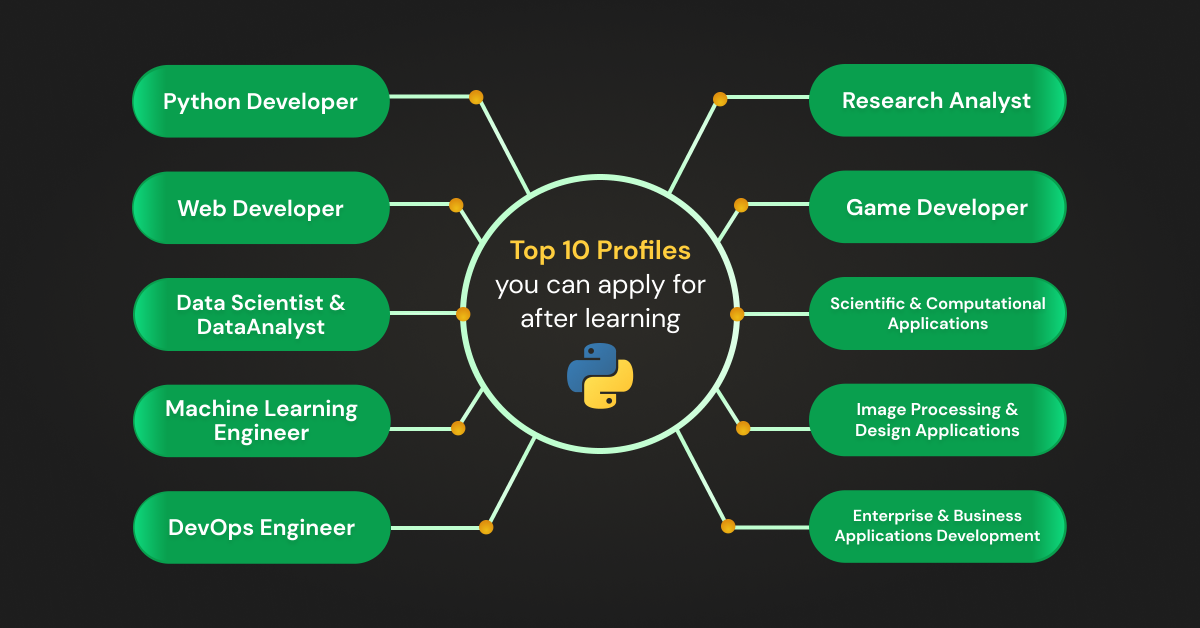
Before diving into the next section, ensure you’re solid on Python essentials from basics to advanced-level. If you are looking for a detailed Python career program, you can join GUVI’s Python Career Program with placement guidance. You will be able to master the Multiple Exceptions, classes, OOPS concepts, dictionary, and many more, and build real-life projects.
3. What are the top reasons to Learn Python in 2023?
Here are the top 10 compelling reasons to learn Python in 2023:
- Beginner Friendly
- Extensive libraries with widespread usage
- Adopted by top companies
- Excellent career opportunities
- Strong community support
- Extreme versatility
- Best for website development
- Good Testing frameworks
- Amazing graphics
- Visualization of data
4. What is the scope of Python?
Python is quickly becoming the language of choice for aspiring and current coding enthusiasts who want to excel to have a stable career. It’s also utilized for a variety of things, including web development, game development, mobile app development, and data science.
5. Why is Python super popular? What are the best features of Python?
Only if you’re new to programming, you would probably be thinking why all the buzz surrounding Python’s capabilities? Then let me tell you what makes Python so unique:
- Easy to code
- Open-source & free software
- Support for GUI
- Object-oriented methodology
- High-level language & highly portable
- Integrated by nature & extremely dynamic
- An extensive array of libraries and community support
- Supports other languages
- Multipurpose
- Widely used
Wish to learn it in detail: Read here- 13 Key Features of Python You Need to Know in 2023
Okay, heard a lot about Python already? Then let me enlighten you with the prerequisites to get started with Python.

6. Some tips to start learning Python?
- Code daily
- Work on logical thinking
- Practice regularly on Python shell
- Take notes
- Tap errors
- Gather a group of people who are eager to learn Python
- Teach
- Try Pair programming
- Ask Questions
- Start building projects
So, let’s get into action. Then, let’s learn some interesting Python interview questions that you would most likely be asked in your upcoming Python job interview.
A few Python Interview Questions
7. What is a namespace in Python?
A namespace is a system that has a unique name for each and every object in Python. Each package, module, class, function, and method function owns a “namespace” in which variable names are resolved.
8. How to implement namespace?
The Python interpreter understands what exact method or variable one is trying to point to in the code, depending upon the namespace. So, the division of the word itself gives a little more information.
9. What are the types of the namespace?
Namespaces are of basically three types:
- Built-in Namespace
- Global Namespace
- Local Namespace.
10. What is variable scope in Python?
In Python, variables are the containers for storing data values. They are references, or pointers, to an object in memory which means that whenever a variable is assigned to an instance, it gets mapped to that instance. For example: Let’s create three variables age, salary, and name. And then print them using the print() command. So the output will be as
50, 15000, and string value ‘Rahul’
11. What are List, tuple, and dict in Python?
We use Lists to store multiple items in a single variable. Let’s learn with an example: We will create a list called list names, that consists of several names, enclosed inside the square bracket in it.
A tuple is a collection of values that is in order and unchangeable. Similar to the above example, we will create a tuple called tuple names, which consists of several names enclosed inside the parenthesis bracket in it.
While, a dictionary is a collection that is ordered, changeable, and does not allow duplicates. We write Dictionaries with curly brackets and have keys and values in them. For example, let’s create a dictionary. That has a key’s name, age, and nationality and their values are mano, 20, and Indian. Keys and values should be enclosed by double quotes.
Find out more about Python Lists & Tuples here.
1. Python | List Of Lists Changes Reflected Across Sublists
2. How To Make A Flat List Out Of A List Of Lists
12. What is the purpose of the word ‘self’?
The self in Python is used to represent the class’s instance.
Python needs to define the class as:
| class myScore: def mySubject(self, name): self.name = name |
“self” is written in 2 places. WHY? Do you need to define it in each line? Most importantly “what is the purpose of the word ‘self’ in Python.
13. What are global variables in Python?
The variables that we declare outside a function are global. We can reference such variables from anywhere inside the program. Hence, the scope of the variable is global. We can access them from inside or outside of the function. Let’s learn more about these by implementing a practical example:
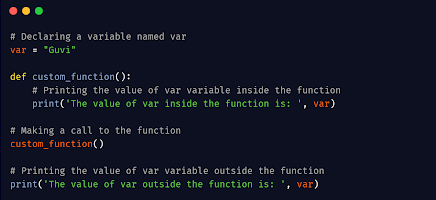
14. How To Use Global Variables Inside A Function In Python?
The global keyword is used to make a local variable turn into global and allows making changes to the variable in the local context. Let’s turn ourselves back to the previous example but this time after making some subtle changes.
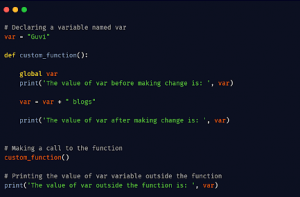
To be able to assign and manipulate the global variable ‘var’ inside the function, we declare it with a global keyword inside the function. Now, as we try to make changes in the ‘var’ variable, the interpreter does not interpret it as a local variable. Hence, we can easily make the changes.
Upon compiling and executing the above code, we receive the following output:

The changes that we make to the global variable inside the function will be visible throughout the program, as seen from the last print statement written outside the function body.
For more details: Read- How To Use Global Variables Inside A Function In Python? With Examples!
15. What does the yield keyword in Python do?
We use the ‘yield’ keyword in Python to make generator functions and usually return generator objects.
Scenarios where usage of yield keyword in Python is beneficial to a programmer:
Given below are some pointers which discuss the usage of the ‘yield’ keyword in Python:
- Whenever we want to create a generator function, we can use the ‘yield’ keyword.
- When we want to generate an iterator sequence but don’t want to store the entire sequence in memory so that we can save memory.
- To save our computational time because the current state of the local variable is saved and execution resumes from the last yield statement.
- To return data having a really large size.
16. yield keyword vs. return keyword in Python
Here is the difference between the return keyword and the yield keyword:
| return keyword | yield keyword |
| We usually use the return keyword inside normal user-defined functions. | We usually use the yield keyword inside the generator function. |
| You can use the return keyword to return a specific value in a normal function when the function gets called. | You can use the yield keyword to return a generator object when the function is called. |
| Items returned occupy space in the memory. | No memory is allocated to the items returned by the yield keyword. |
| Items returned can be iterated again and again as they are saved onto memory. | Items returned can be iterated only once. |
| After execution of the return statement inside the function, function execution terminates. And the control flows back to the caller. When we make a call to it again, it starts executing from the beginning. | After execution of the yield statement, the function execution halts. And the value returns to the caller. When we call the function again, it starts executing from the last yield statement where it left off. |
| Execution time is less as compared to yield when we perform operations on large data. | Execution time is faster. |
| It is convenient when the size of data is small. | As memory usage is less, it is very useful when we want to deal with large datasets. |
Find out more about the yield keyword in Python: What Does The yield Keyword In Python Do?
17. Which are the best Deep Learning libraries in Python?
Firstly, in Python, there are hundreds of deep-learning libraries.
The deep learning libraries are external open-source Python libraries. So, we can’t install many of them by directly using the pip command. Here, the way of installation of each library is different.
We can use a combination of some library files in the program. All libraries have their own features to solve machine learning and deep learning problems. Most of the deep learning libraries work on Python 3.7 or later versions. Here are the top deep-learning libraries in Python.
- Tensor Flow
- TFLearn
- PyTorch
- Theano
- Keras
- NLTK
- Orange3
- OpenNN
Get a detailed view of the top deep learning libraries in python here.
By the way, do you know how to set up and kickstart with Python?
Read this to get started with Python: How to set up a Python environment!
18. Can you explain LEGB Rule explaining scope in Python?
Most importantly, different programming languages have different rules for resolving the Scope. Similarly, Python has a LEGB rule. Every character of the term “LEGB” has a specific meaning and represents a particular scope type.
Note: The scopes mentioned below are arranged in the Narrowest to Broadest range.
- Local: This Scope is valid for all the defined elements inside a function or a class.
- Enclosed: Names defined in nested functions or closed functions.
- Global: Names defined above a Python class or at the top of a module
- Built-in: All the predefined names in Python directories.
Want to learn more about the LEGB rule: Read here– The LEGB Rule Explaining Scope in Python Programming Language
19. How to iterate through two lists in parallel?
The list can store a collection of elements. It is always easy to execute a single element of a single list. But when it comes to iterating the multiple lists parallelly, it might be a little bit confusing!
Well, there are two different methods for how to iterate through two lists in parallel. Let’s check both of them one by one with relevant examples.
Below, we have taken the example of a 3 element list that helps you understand in a better way.
- zip(): zip() function returns the iterator in Python 3. It stops running when any of the list elements see exhaustion. Or we can say that it always executes till the list’s smallest elements come.
Then, let’s take an example to execute zip() and itertools.izip():
Python 3:
Output:
(‘white’, 1, 365)
(‘red’, 2, 366)
- itertools.zip_longest(): It does not stop after executing the smallest element of the list. zip_longest execute till each element of the list does not run. In case there is a short iterator(s), this function results in a tuple as the None value.
Let’s take an example of itertools.zip_longest()
Python 3:
Output:
(‘white’, 1, 365)
(‘red’, 2, 366)
(‘blue’, 3, None)
NOTE:
If you want to assign a specific value rather than None in zip_longest() or izip_longest(), then you can assign it as:
Let an example of izip_longest()
Python 2:
Output:
(‘white’, 1, 365)
(‘red’, 2, 366)
(‘blue’, 3, 0)
Curious to find out in detail: Read here- Python: How To Iterate Through Two Lists In Parallel?
More on Python Interview Questions: Scroll down.
20. Can you name the top Python Libraries for Machine Learning?
- NumPy
- Pandas
- SciPy
- SymPy
- Matplotlib
- Seaborn
- Bokeh
- Plotly
- Scikit-learn
- Beautiful Soup
- Scrapy
So, the above 11 Python libraries are the best for Machine Learning.
21. Top 5 reasons to choose Python for Game Development
The following are the top reasons to choose Python for game development:
- Easy To Use
- Extensive library support
- Several options for creating GUI
- A higher level of abstraction
- An excellent cross-platform language
- A clean and readable syntax
- Easier to debug and manage
- Develop Games with Deep Learning
- Can handle Large Data Sets
- A very efficient workflow for data analysis
22. How to sort a dictionary by values?
Dictionary in Python is an important data structure. By using Dictionary, we can store data in the form of key-value pairs. Each key in a dictionary can store at most one value. While declaring a key it must be noted that the keys in the dictionary must be immutable in nature and the supported data types for declaring a key are: integers, strings, and tuples as these are immutable. Also, the dictionary has a unique property that doesn’t allow duplication of keys inside the dictionary.
sorted() function in Python
The sorted function is used to sort an iterable object in a particular order. And then it returns the result in form of a list.
Syntax
sorted(iterable, key, reverse)
The function accepts three parameters that are discussed in detail below:
- iterable: It is an object that can be iterated. Such as a sequence type (like list, tuple, string) or a collection type (like a dictionary, set, frozen set, etc.) or it could be any other iterable object.
- key: It is an optional parameter inside the function. It accepts a function to be passed inside it This becomes the basis over which element in the iterable is compared for sorting. The default value is set to None.
- reverse: It is also an optional parameter and accepts Boolean values in True and False. If the value passed is True, then the sorted list will be displayed in reverse order. Otherwise, the default value is set to False, which displays the result in ascending order.
Want to learn sorting in detail: Learn here.
23. Throw light on *(single)Asterisk and **(double)Asterisk

Single Asterisk allows the developer to pass a variable number of Positional parameters and automatically converts the input values into the form of tuples. At the same time, Double Asterisks allow the users to pass a variable number of Keyword parameters in the form of a Dictionary.
Learn *single asterisk and **double asterisk here: Python * Single And **Double Asterisk Can’t Be Explained Any Better!
24. Which is better Ruby or Python? And Why?
Ruby vs. Python! What does Ruby have that Python doesn’t have and vice-versa?

More on Python Interview Questions:
Python is a vast topic and this list of Python Interview Questions can go on and on. We have multiple beautifully drafted blogs on Python most asked Interview Questions.
One of the best courses for Python is from GUVI career programs. Master Python and carve your path to success in any top-trending advanced tech field.
So, do you have any queries? Feel free to write to us.
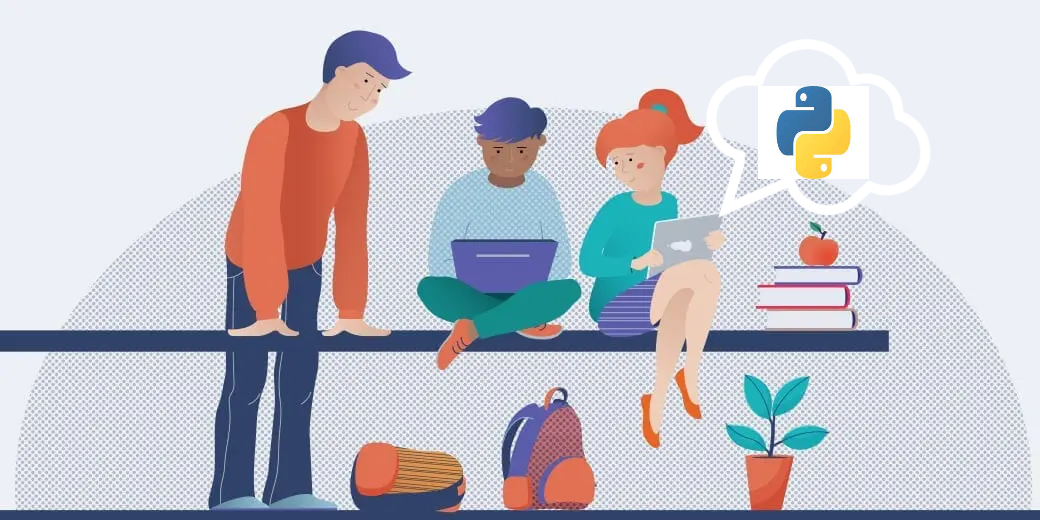




























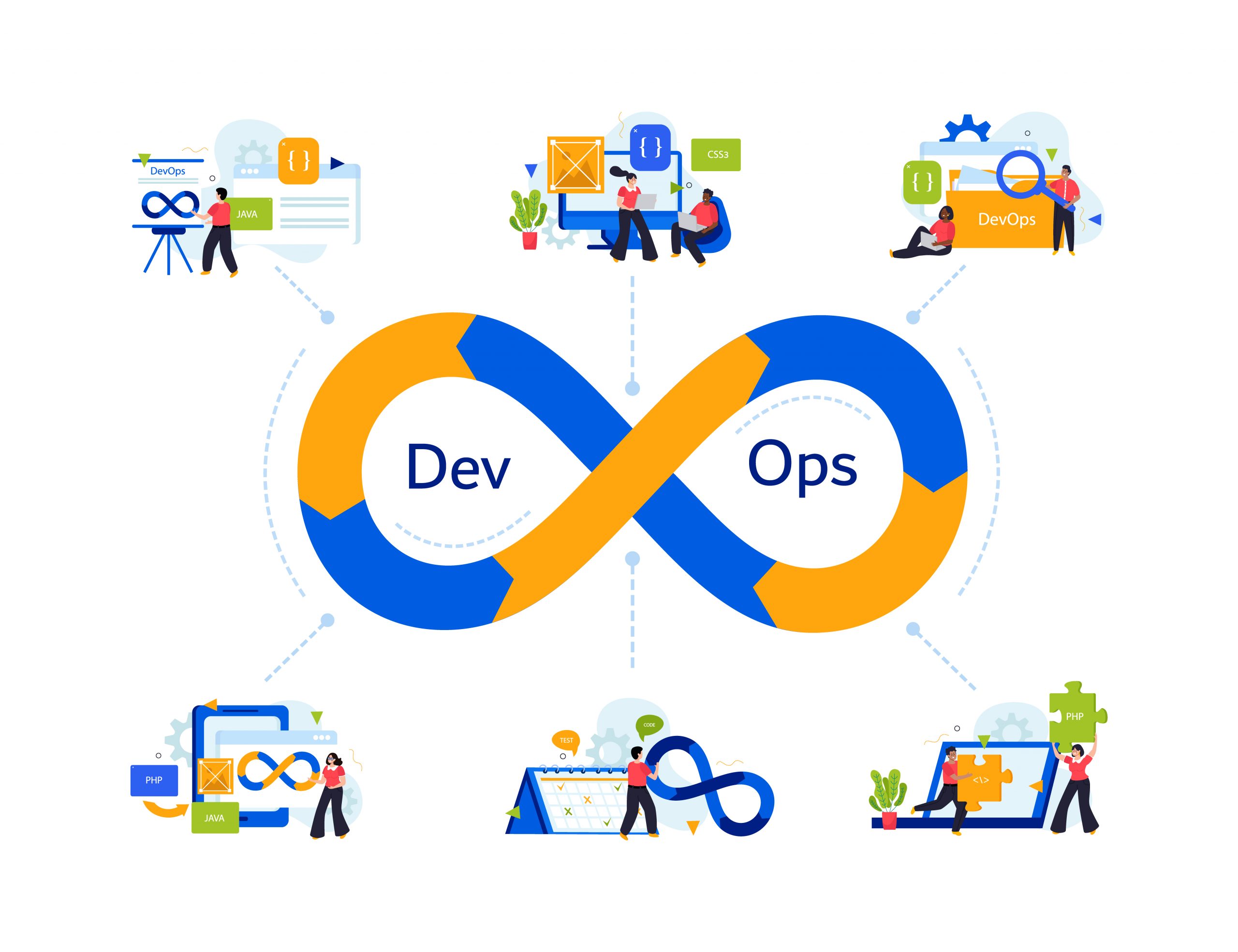
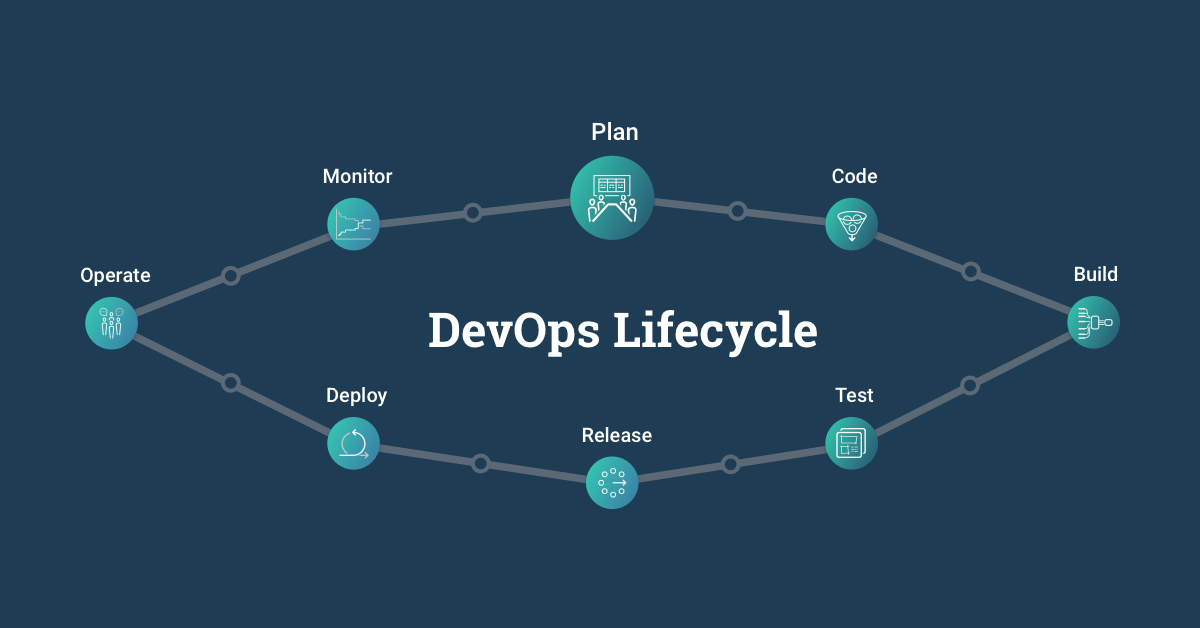



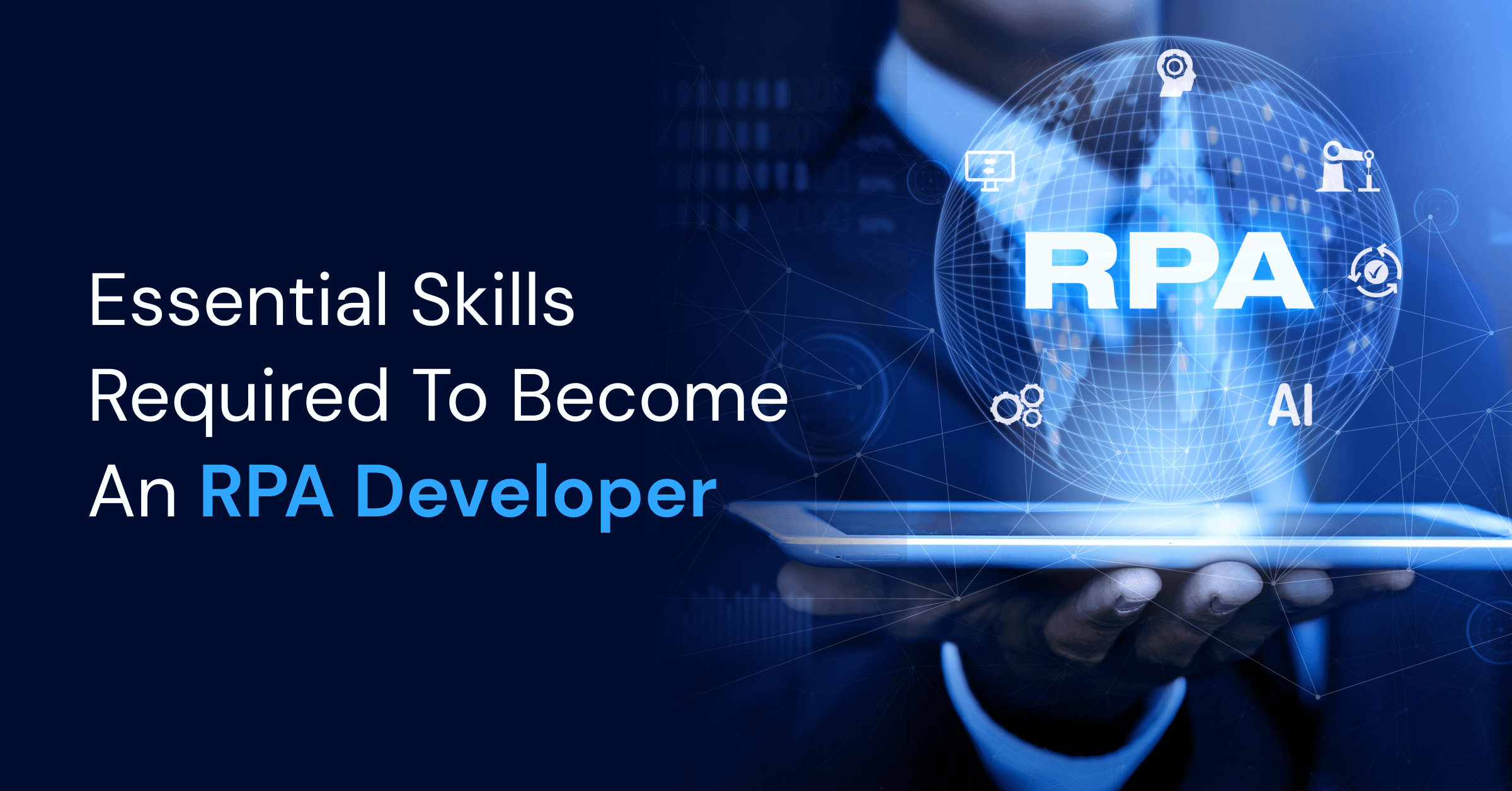

Did you enjoy this article?